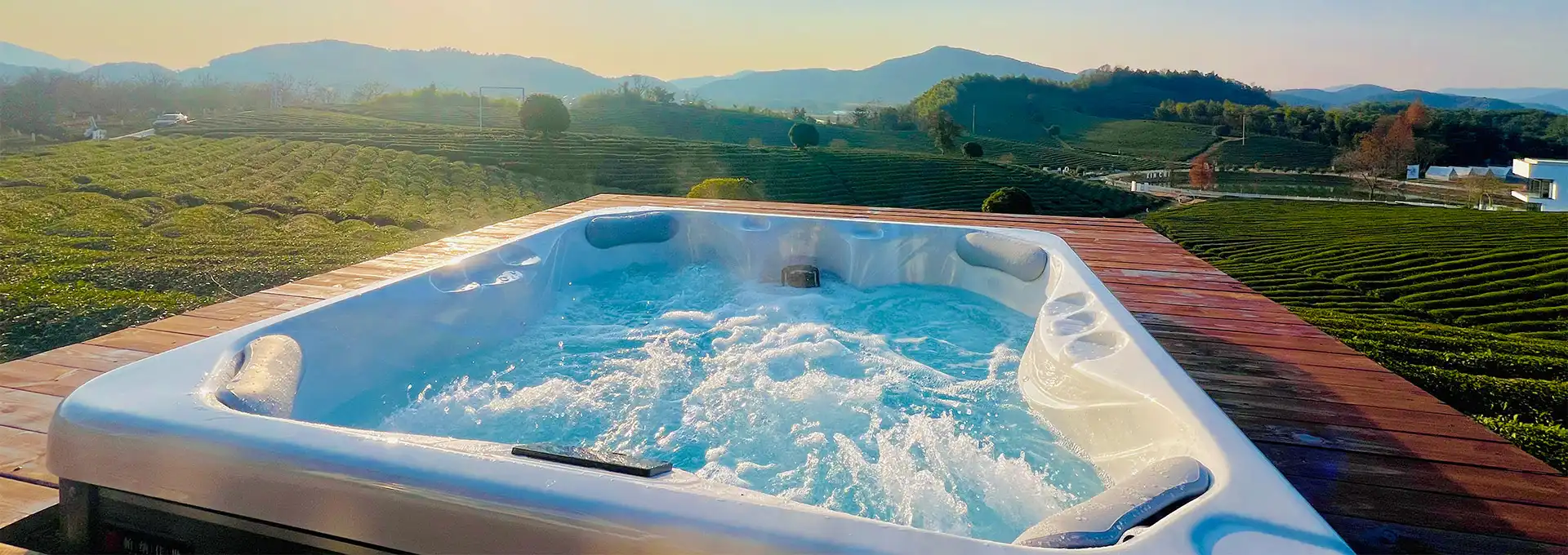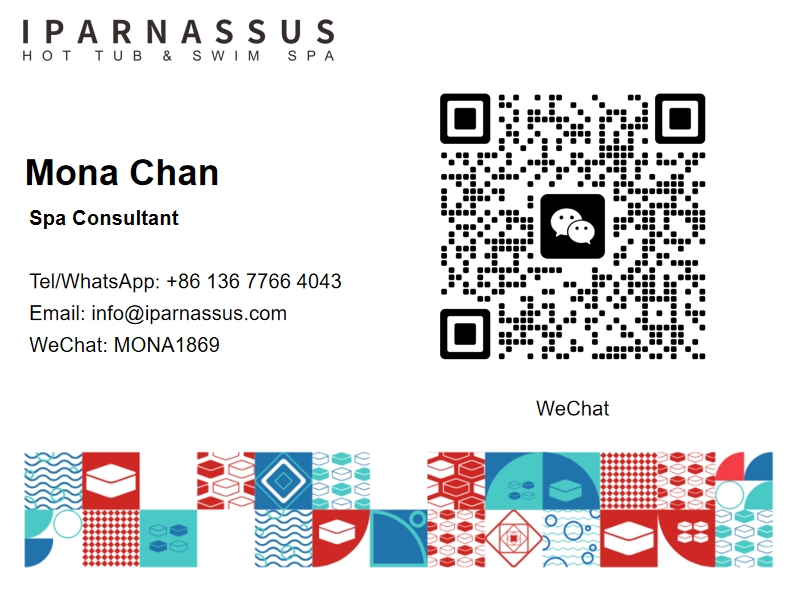What Safety Features Do Hot Tubs Need?
2025-07-09 22:38:03
Hot tubs provide a luxurious and therapeutic experience for relaxation and wellness, but ensuring proper safety measures is paramount for users' wellbeing. Understanding the essential safety features that every hot tub should incorporate helps protect against potential hazards while maximizing the enjoyment of your spa experience. From electrical protection systems to water quality monitoring, modern hot tubs require comprehensive safety mechanisms to prevent accidents and maintain a secure environment for all users.
What Are the Essential Electrical Safety Features for Hot Tubs?
Ground Fault Circuit Interrupter (GFCI) Protection
Ground Fault Circuit Interrupter protection stands as the most critical electrical safety feature for any hot tub installation. This sophisticated system continuously monitors electrical current flow and instantly shuts off power when it detects even the slightest electrical imbalance, preventing potentially fatal electrocution incidents. Every hot tub must have GFCI protection installed by a qualified electrician according to local electrical codes. The system protects against ground faults that could occur due to damaged wiring, water infiltration, or faulty electrical components. Modern hot tub installations typically require multiple GFCI breakers to protect different electrical circuits, ensuring comprehensive coverage for pumps, heaters, lights, and control systems.
Proper Wiring and Electrical Components
Professional electrical installation using appropriate wiring gauges and weatherproof components ensures long-term safety and reliability for hot tub operation. The electrical system must be designed to handle the specific power requirements of your hot tub model, including heating elements, circulation pumps, and jet systems. All electrical connections should be made using marine-grade or outdoor-rated components that can withstand moisture and temperature fluctuations. The electrical panel should be properly grounded and located at a safe distance from the hot tub itself. Regular inspection of electrical components by qualified technicians helps identify potential issues before they become safety hazards.
Emergency Shut-off Systems
Emergency shut-off mechanisms provide users with immediate power disconnection capabilities during critical situations. These systems typically include easily accessible emergency stop buttons located near the hot tub and on the control panel. Some advanced hot tub models feature remote emergency shut-off capabilities that can be activated from inside the spa. The emergency shut-off system should be clearly marked and easily identifiable, allowing users to quickly cut power to all electrical components when necessary. Regular testing of these emergency systems ensures they function properly when needed most.
How Do Hot Tubs Maintain Safe Water Quality and Temperature?
Water Filtration and Sanitization Systems
Advanced filtration systems in hot tubs remove contaminants, bacteria, and debris to maintain clean, healthy water for users. Multi-stage filtration typically includes mechanical filters to capture particles and chemical sanitization systems using chlorine, bromine, or alternative sanitizers. UV sterilization systems provide additional protection by destroying harmful microorganisms without relying solely on chemical treatments. Regular filter maintenance and replacement schedules ensure optimal water quality and prevent the buildup of harmful bacteria. Some modern hot tubs incorporate ozone generators or mineral sanitization systems that reduce chemical dependency while maintaining safe water conditions.
Temperature Control and Monitoring
Precise temperature control systems prevent overheating incidents that could cause burns or heat-related health issues. Hot tub thermostats should maintain accurate temperature readings and include backup sensors to prevent system failures. Most safety-conscious hot tub designs include high-limit switches that automatically shut down heating elements if water temperature exceeds safe levels. Digital temperature displays provide real-time monitoring for users, while some advanced models offer smartphone connectivity for remote temperature monitoring. Regular calibration of temperature sensors ensures accurate readings and prevents dangerous temperature fluctuations.
Chemical Balance Monitoring
Maintaining proper chemical balance in hot tub water prevents skin irritation, equipment damage, and bacterial growth. Automated chemical monitoring systems can track pH levels, sanitizer concentrations, and alkalinity to ensure water remains within safe parameters. Some hot tubs feature built-in chemical dispensers that automatically adjust chemical levels based on usage patterns and water testing results. Regular water testing using reliable test strips or digital meters helps users maintain optimal chemical balance. Proper chemical storage and handling procedures prevent accidents and ensure effective sanitization.
What Physical Safety Features Should Hot Tubs Include?
Non-slip Surfaces and Handrails
Strategic placement of non-slip surfaces and sturdy handrails prevents slips and falls during hot tub entry and exit. Textured surfaces around the hot tub perimeter and on steps provide secure footing even when wet. Handrails should be constructed from corrosion-resistant materials and properly anchored to support users' weight during entry and exit. The placement of handrails should accommodate users of different heights and mobility levels. Regular inspection and maintenance of these safety features ensure they remain effective over time.
Secure Covers and Locking Mechanisms
High-quality hot tub covers with secure locking mechanisms prevent unauthorized access and protect against accidental falls into the water. Safety covers should be able to support significant weight and include multiple locking points around the perimeter. Automated cover systems provide convenience while maintaining security features. Child-resistant locks and alarms can provide additional protection for households with young children. The cover should also provide insulation benefits while maintaining its primary safety function.
Proper Lighting and Visibility
Adequate lighting around and within the hot tub area ensures safe navigation during evening use. LED lighting systems provide energy-efficient illumination while creating an attractive ambiance. Underwater lighting should be properly sealed and use low-voltage systems for safety. Motion-activated lighting can automatically illuminate pathways and entry areas when users approach. Emergency lighting systems ensure visibility during power outages or system failures.
Conclusion
Hot tub safety encompasses multiple interconnected systems that work together to create a secure and enjoyable experience. Essential electrical protections, water quality management, and physical safety features form the foundation of responsible hot tub ownership. Regular maintenance and professional inspections ensure these safety systems continue functioning effectively throughout the hot tub's lifespan.
Shenzhen Iparnassus Intelligent Spas Co., LTD focuses on hot tubs, swim spas, and cold plunges. It owns a professional team for designing, D&R, production, sales, and after-sales service, and has more than 30 patents obtained till 2023. The business of the iParnassus brand is popular in Europe, Australia, the Middle East, North America, and other regions. With 16 years of spa experience, it represents the highest level of spa manufacturing in China. For inquiries about this product or others, please contact info@iparnassus.com for dedicated service.
References
1. National Electrical Code (NEC) Article 680: Swimming Pools, Fountains, and Similar Installations. National Fire Protection Association, 2020.
2. Association of Pool and Spa Professionals. "Hot Tub Safety Guidelines and Best Practices." APSP Standards Manual, 2021.
3. Consumer Product Safety Commission. "Safety Requirements for Portable Spas and Hot Tubs." Federal Register Safety Standards, 2019.
4. International Code Council. "Swimming Pool and Spa Code Requirements." ICC Safety Publications, 2020.
5. American Society of Heating, Refrigerating and Air-Conditioning Engineers. "HVAC Applications for Pool and Spa Facilities." ASHRAE Handbook, 2021.
6. Underwriters Laboratories. "Standard for Safety of Spas, Hot Tubs, and Associated Equipment." UL 1563 Safety Standard, 2020.



